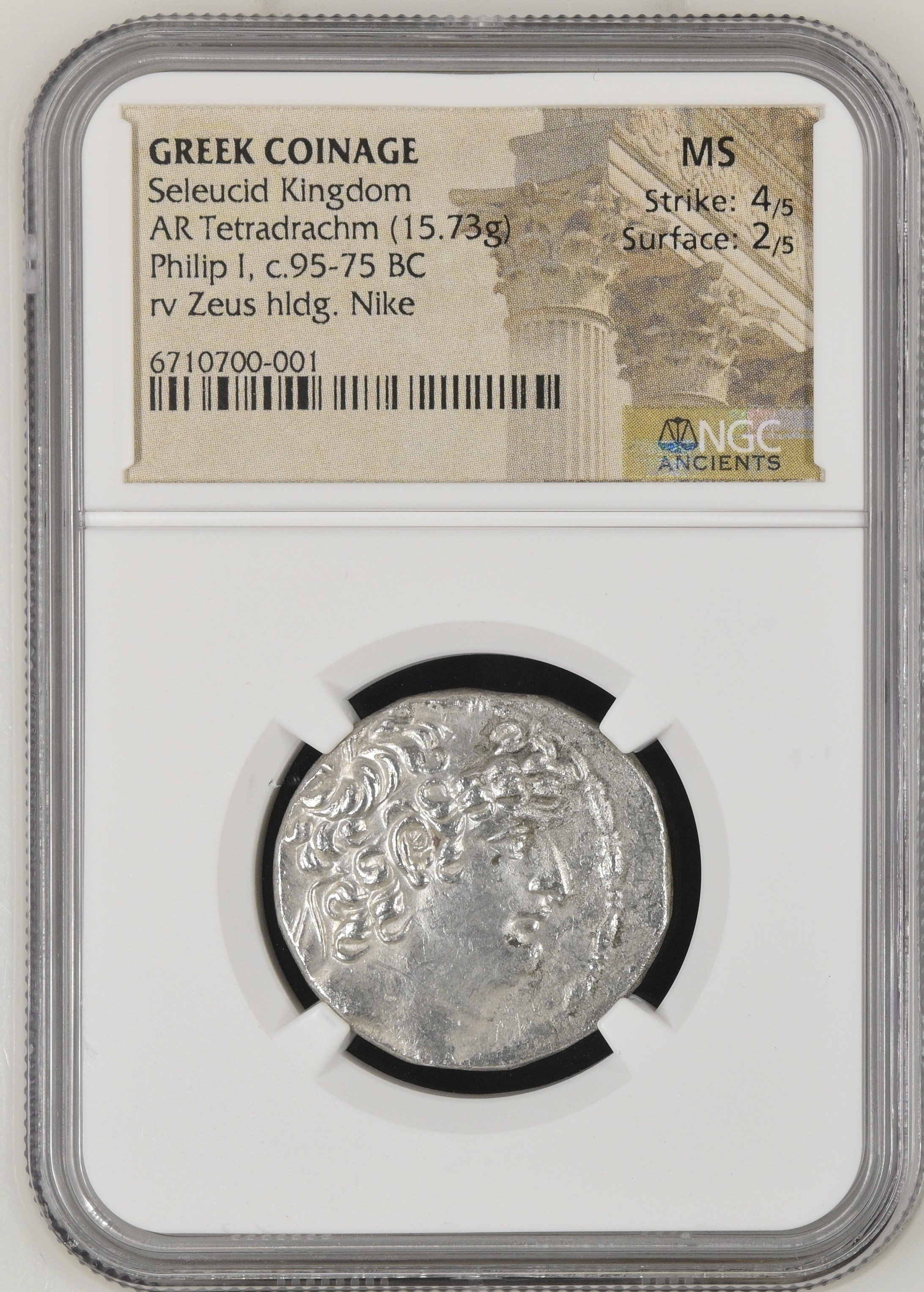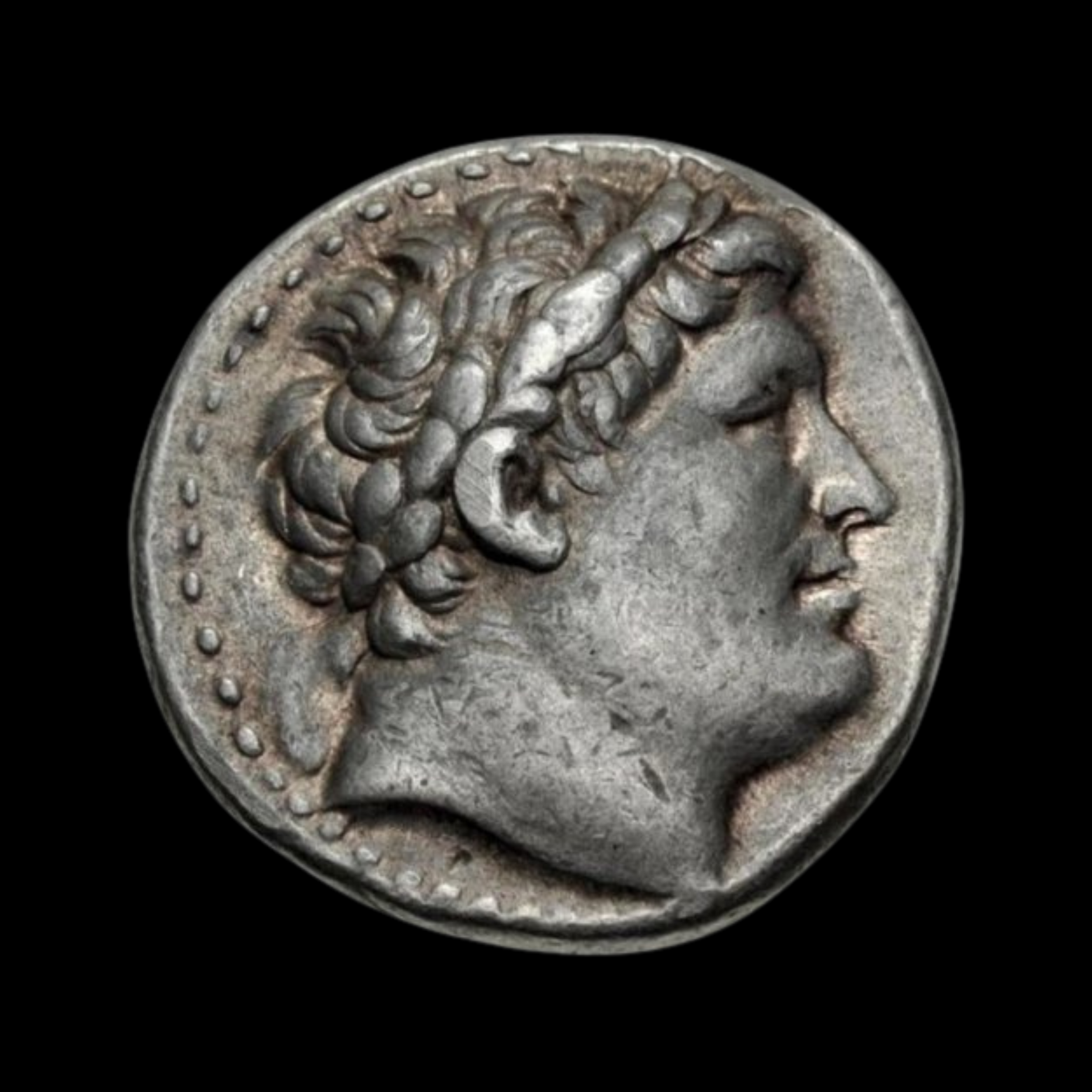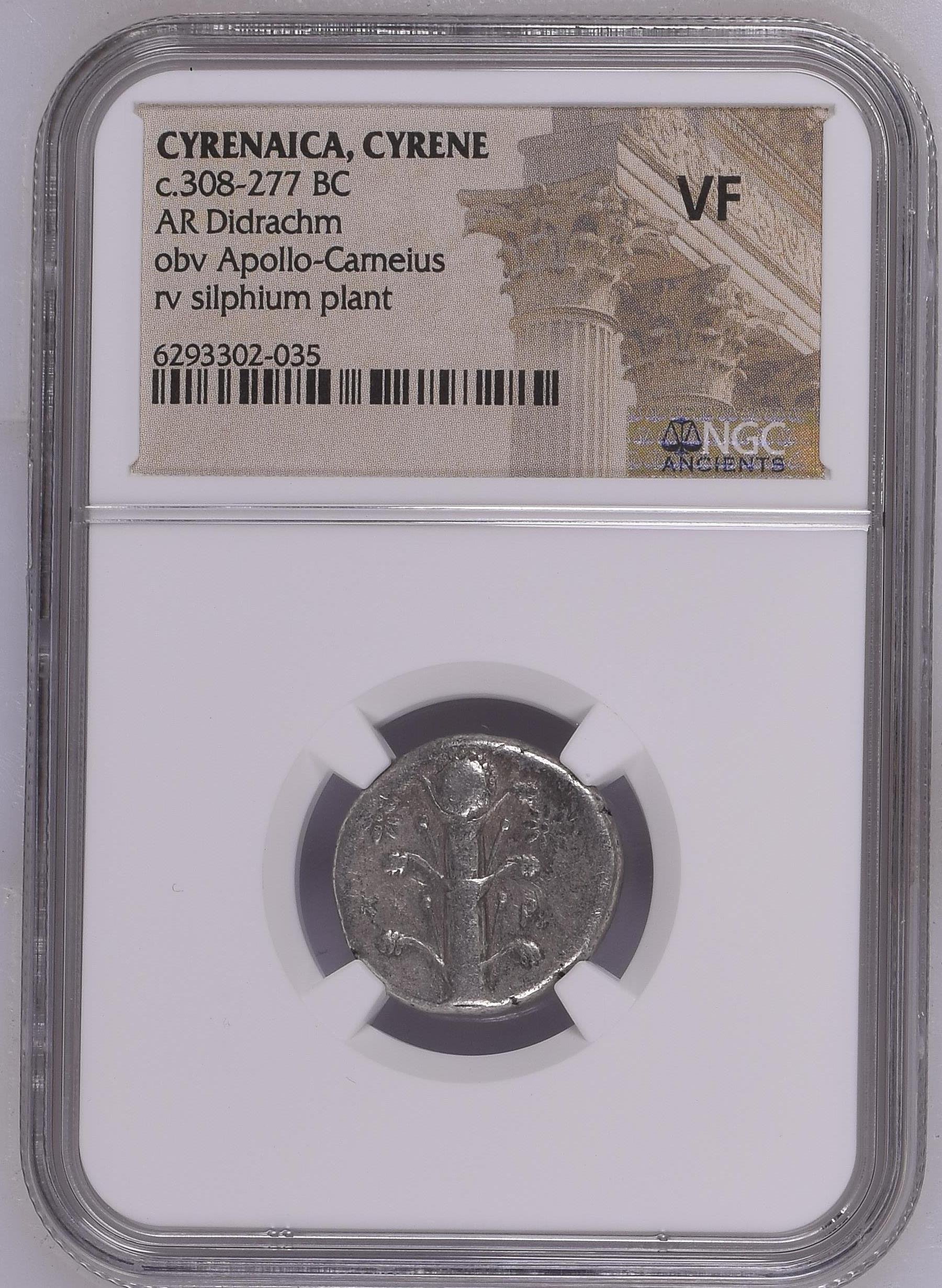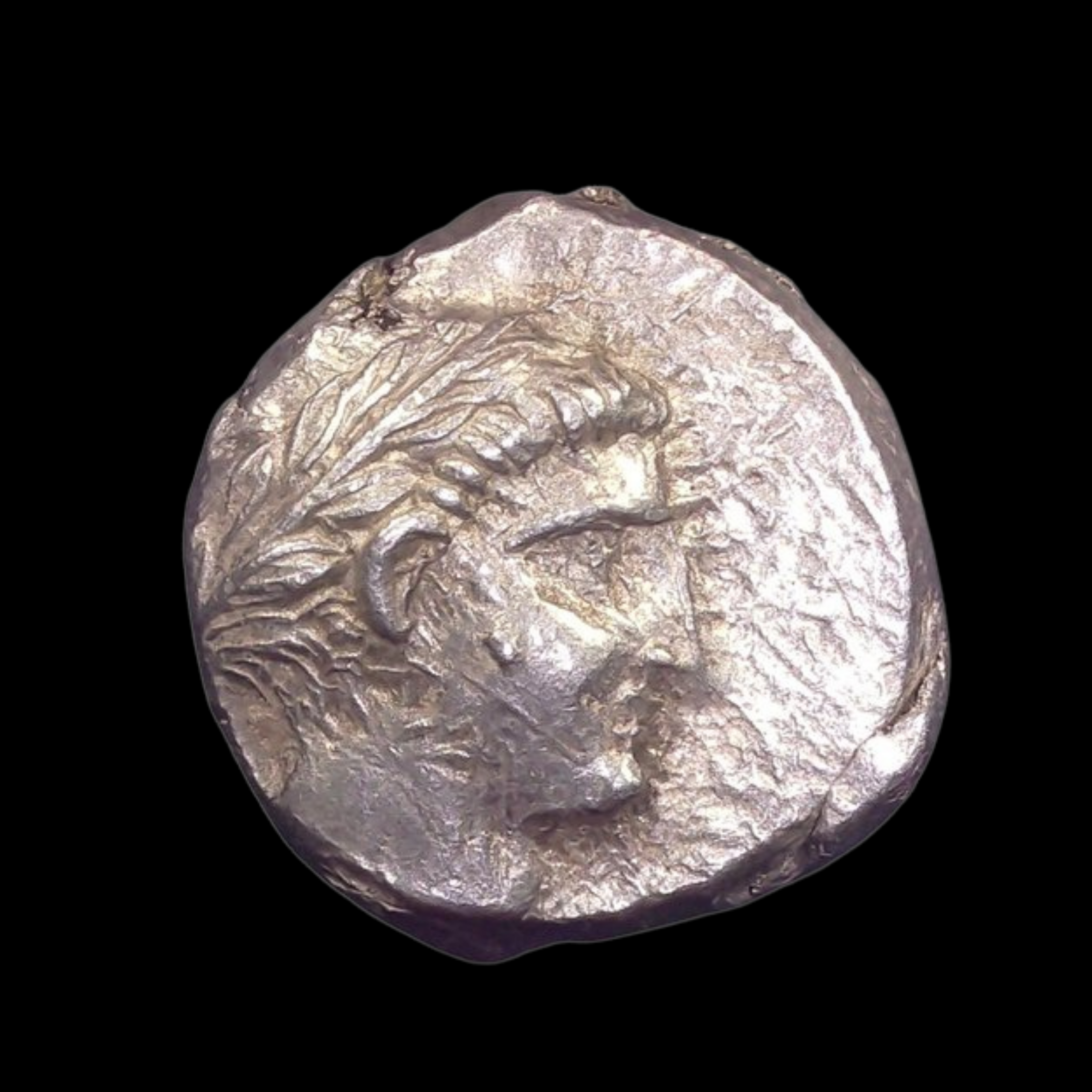 Image 1 of 2
Image 1 of 2

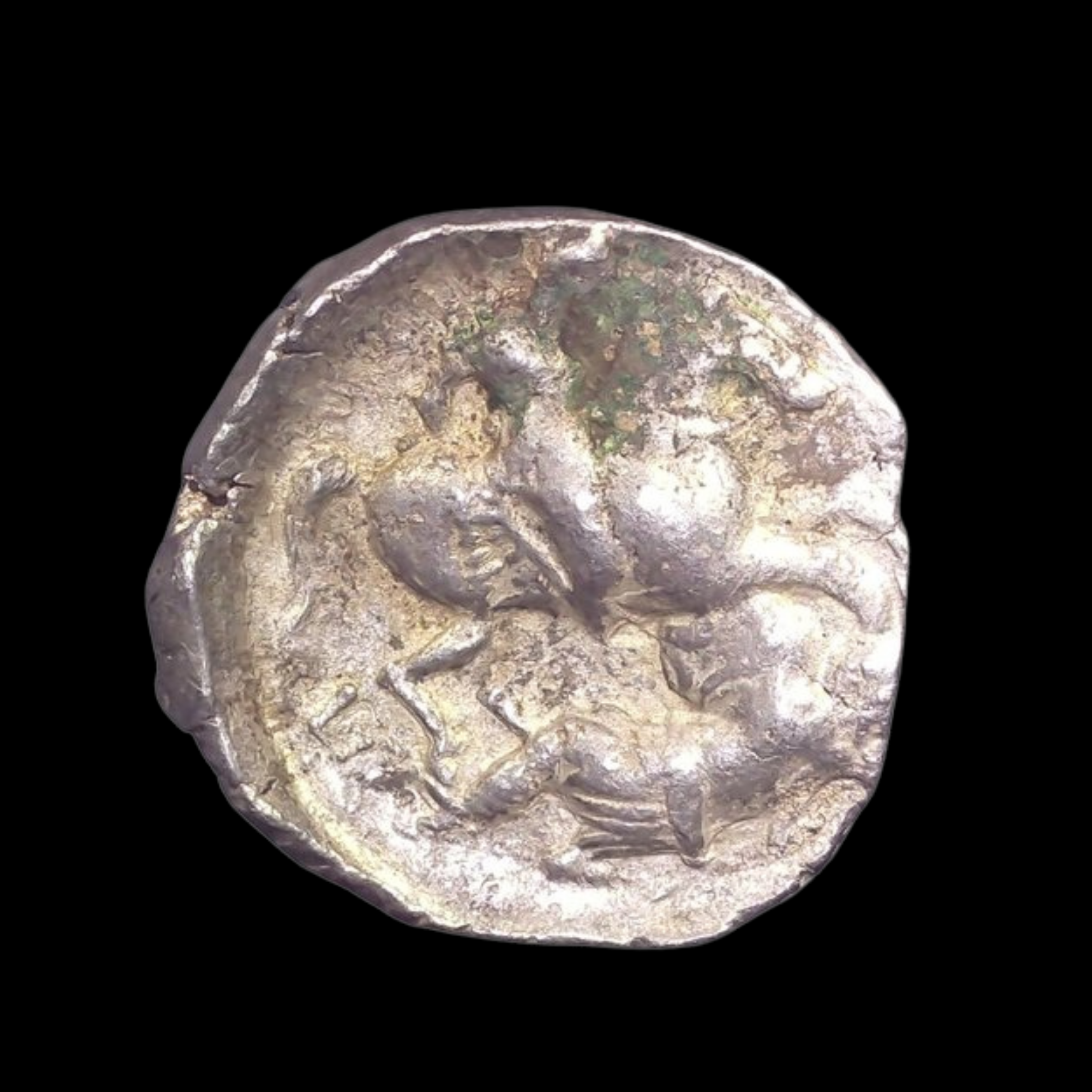 Image 2 of 2
Image 2 of 2



Paeonian Silver Tetradrachm (Large Silver Coin) of King Patraos featuring Apollo (about 2350 years ago)
This large silver tetradrachm (worth four drachms) was minted between 335-315 BC in Paeonia (ancient kingdom in what is now northern Macedonia and southern Serbia).
Front Side: Features the laureate (bay-wreathed) head of Apollo with profile eye facing right
Back Side: Shows a horseman in a crested helmet charging right, spearing a fallen enemy carrying a Macedonian shield, with the inscription "PATPAOY" (of Patraos)
Technical Details:
Weight: 12.87 grams
References: Cf. BM-4 Provenance: Ex. Paeonian Hoard
Historical Significance: This coin was issued during the reign of King Patraos, who ruled Paeonia during the tumultuous period following Alexander the Great's death. The militaristic imagery reflects the constant warfare in the region as various successor kingdoms fought for dominance. The fallen enemy with a Macedonian shield likely represents conflict with neighboring Macedonia. Apollo's portrait demonstrates cultural ties with the wider Greek world, while the dynamic cavalry scene celebrates the Paeonians' reputation as excellent horsemen. These coins were minted during a brief period of Paeonian independence before the kingdom was absorbed into the Macedonian empire.
This large silver tetradrachm (worth four drachms) was minted between 335-315 BC in Paeonia (ancient kingdom in what is now northern Macedonia and southern Serbia).
Front Side: Features the laureate (bay-wreathed) head of Apollo with profile eye facing right
Back Side: Shows a horseman in a crested helmet charging right, spearing a fallen enemy carrying a Macedonian shield, with the inscription "PATPAOY" (of Patraos)
Technical Details:
Weight: 12.87 grams
References: Cf. BM-4 Provenance: Ex. Paeonian Hoard
Historical Significance: This coin was issued during the reign of King Patraos, who ruled Paeonia during the tumultuous period following Alexander the Great's death. The militaristic imagery reflects the constant warfare in the region as various successor kingdoms fought for dominance. The fallen enemy with a Macedonian shield likely represents conflict with neighboring Macedonia. Apollo's portrait demonstrates cultural ties with the wider Greek world, while the dynamic cavalry scene celebrates the Paeonians' reputation as excellent horsemen. These coins were minted during a brief period of Paeonian independence before the kingdom was absorbed into the Macedonian empire.
This large silver tetradrachm (worth four drachms) was minted between 335-315 BC in Paeonia (ancient kingdom in what is now northern Macedonia and southern Serbia).
Front Side: Features the laureate (bay-wreathed) head of Apollo with profile eye facing right
Back Side: Shows a horseman in a crested helmet charging right, spearing a fallen enemy carrying a Macedonian shield, with the inscription "PATPAOY" (of Patraos)
Technical Details:
Weight: 12.87 grams
References: Cf. BM-4 Provenance: Ex. Paeonian Hoard
Historical Significance: This coin was issued during the reign of King Patraos, who ruled Paeonia during the tumultuous period following Alexander the Great's death. The militaristic imagery reflects the constant warfare in the region as various successor kingdoms fought for dominance. The fallen enemy with a Macedonian shield likely represents conflict with neighboring Macedonia. Apollo's portrait demonstrates cultural ties with the wider Greek world, while the dynamic cavalry scene celebrates the Paeonians' reputation as excellent horsemen. These coins were minted during a brief period of Paeonian independence before the kingdom was absorbed into the Macedonian empire.
In antiquity, Paeonia or Paionia (Ancient Greek: Παιονία, romanized: Paionía) was the land and kingdom of the Paeonians or Paionians (Ancient Greek: Παίονες, romanized: Paíones).
The exact original boundaries of Paeonia, like the early history of its inhabitants, are obscure, but it is known that it roughly corresponds to most of present-day North Macedonia and north-central parts of Greek Macedonia (i.e. probably the Greek municipalities of Paionia (excluding the village of Evropos[1]), Almopia, Sintiki, Irakleia, and Serres), and a small part of south-western Bulgaria.[2][3][4][5][6] Ancient authors placed it south of Dardania (an area corresponding to modern-day Kosovo and northern North Macedonia), west of the Thracian mountains, and east of the southernmost Illyrians.[7] It was separated from Dardania by the mountains through which the Vardar river passes from the field of Scupi (modern Skopje) to the valley of Bylazora (near modern Sveti Nikole).
In the Iliad, the Paeonians are portrayed as allies of the Trojans. During the Persian invasion of Greece, the conquered Paeonians from as far as the Lake Prasias, including the Paeoplae and Siropaiones, were deported from Paeonia to Asia.[8]
You Might Also Like
